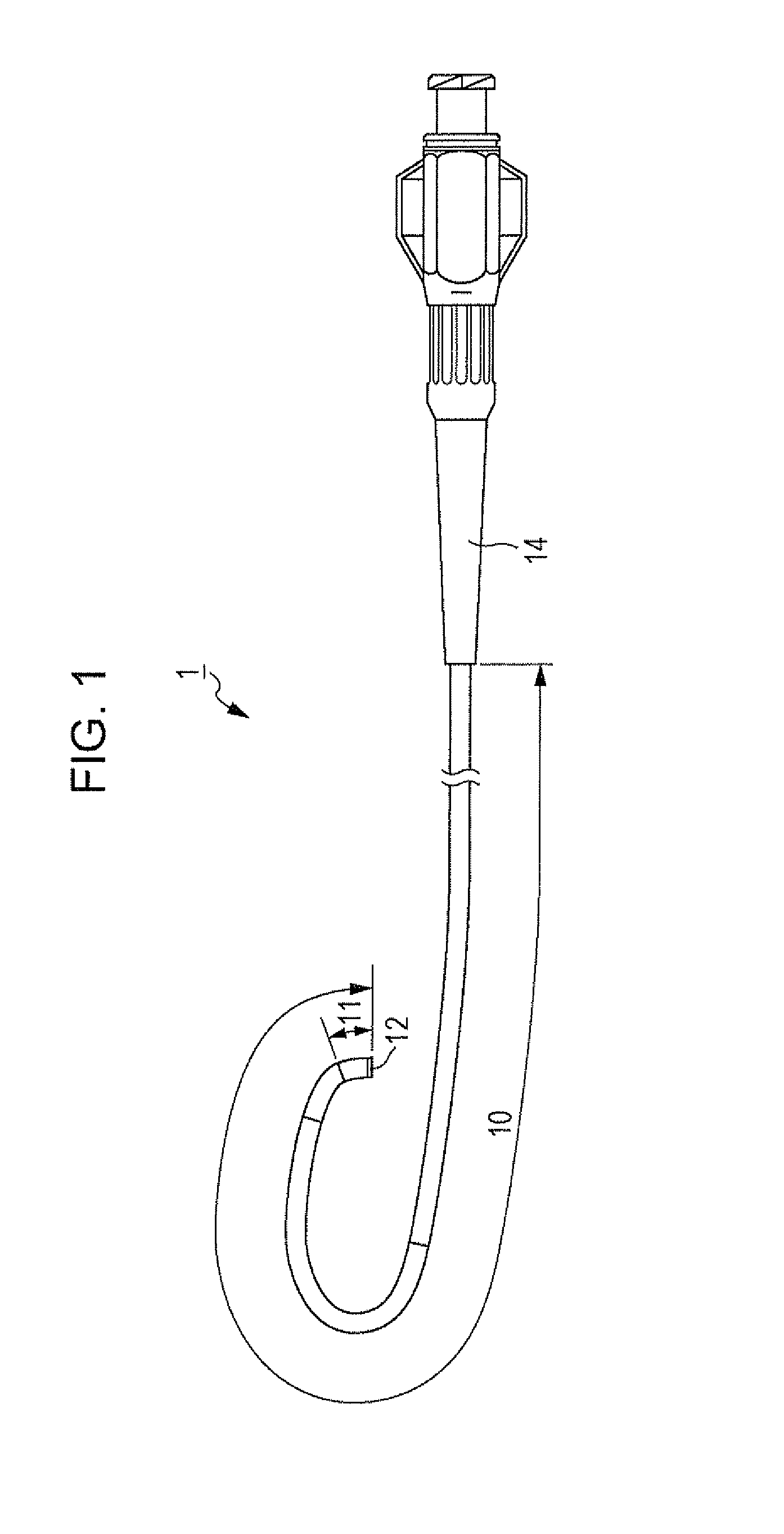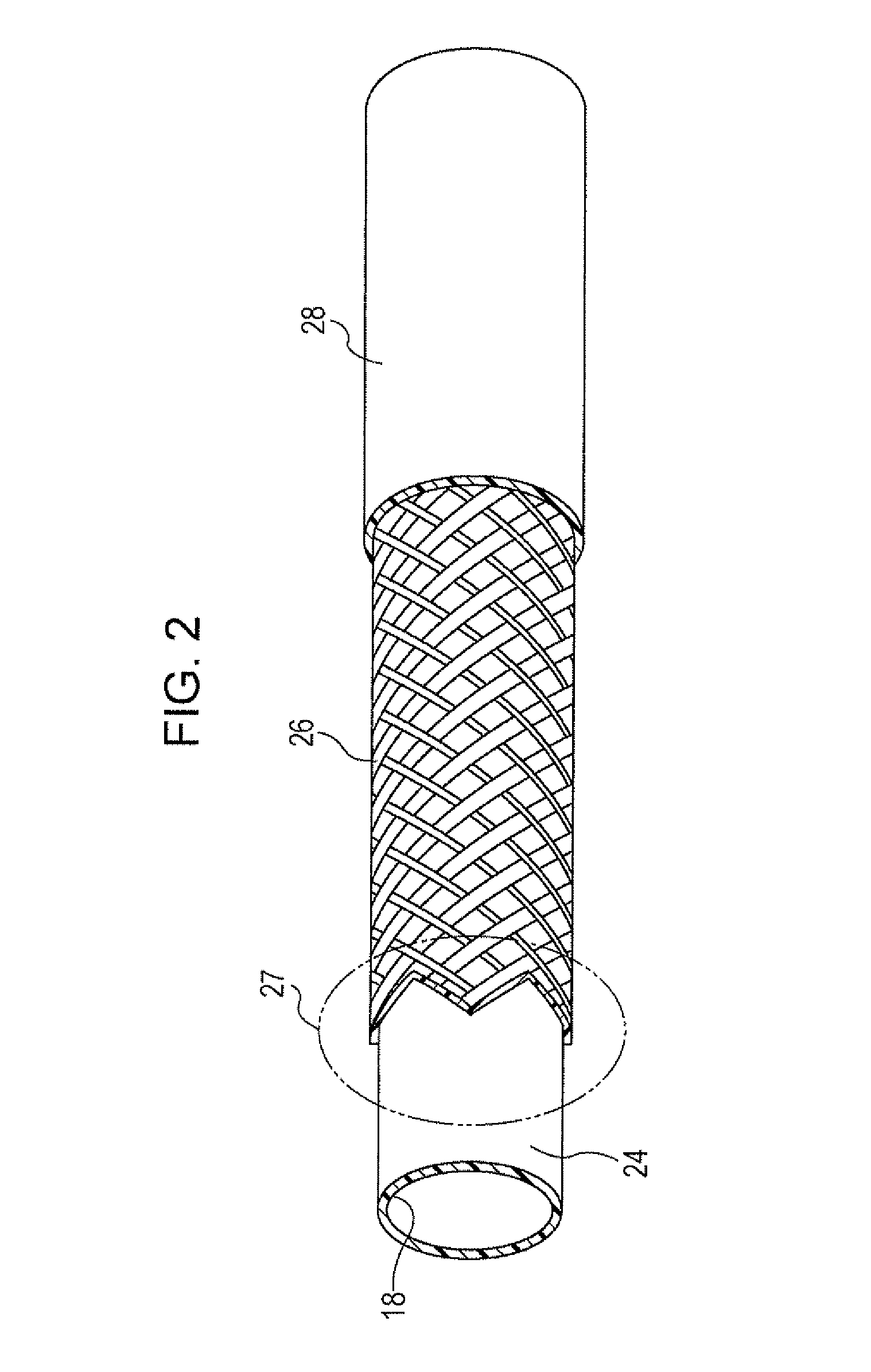catheter
- Summary
- Abstract
- Description
- Claims
- Application Information
AI Technical Summary
Benefits of technology
Problems solved by technology
Method used
Image
Examples
Embodiment Construction
[0022]Referring to FIGS. 1 to 9B, a catheter 1 according to an embodiment will be described as an example. In FIGS. 1, 2, and 3, the left side is a distal side (far side) that is inserted into a body while the right side is a proximal side (a near side or a base side) that is manipulated by a technician such as a doctor. For ease of understanding, small components such as first wires 26a and second wires 26b of a braid 26, which are described below, are slightly exaggerated throughout the drawings relative to the dimensions of other components.
[0023]The catheter 1 illustrated in FIG. 1 is a tubular medical device having a full length of approximately 1200 mm. The catheter I mainly includes a catheter body 10 having flexibility, a distal tip 12 bonded to a distal end portion 11 of the catheter body 10, and a connector 14 fixed to a proximal portion of the catheter body 10.
[0024]As illustrated in FIGS. 2 and 3, the catheter body 10 includes an inner layer 24, a braid 26 serving as a r...
PUM
| Property | Measurement | Unit |
|---|---|---|
| Thickness | aaaaa | aaaaa |
| Angle | aaaaa | aaaaa |
| Width | aaaaa | aaaaa |
Abstract
Description
Claims
Application Information
 Login to View More
Login to View More - R&D
- Intellectual Property
- Life Sciences
- Materials
- Tech Scout
- Unparalleled Data Quality
- Higher Quality Content
- 60% Fewer Hallucinations
Browse by: Latest US Patents, China's latest patents, Technical Efficacy Thesaurus, Application Domain, Technology Topic, Popular Technical Reports.
© 2025 PatSnap. All rights reserved.Legal|Privacy policy|Modern Slavery Act Transparency Statement|Sitemap|About US| Contact US: help@patsnap.com



